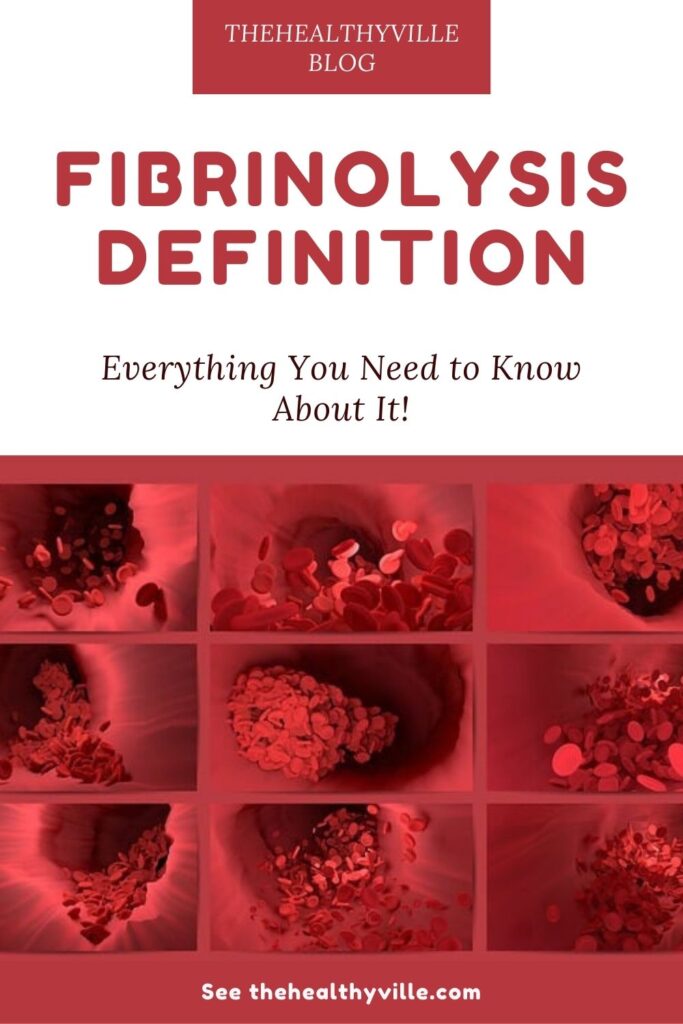The fibrinolysis definition is: the thing that participates in the balance between coagulation and anticoagulation allows us to stay alive as human beings.
Fibrinolysis, the process that prevents thrombus formation
Fibrinolysis is a natural process in the human body. It is responsible for breaking the networks a molecule fibrin forms. These networks are the ones that finally constitute the blood thrombi. Therefore, fibrinolysis prevents the formation of thrombi and, as a consequence, prevents the development of certain pathologies, such as ischemias.
Depending on whether the process is natural or pathological, two types of fibrinolysis can be differentiated:
- Primary: it is the natural breakdown of blood clots due to all the biological mechanisms involved.
- Secondary: it is the breakdown of thrombi due to a health disorder, a drug or another external cause. The result of this type of fibrinolysis is usually heavy bleeding.
What is the definition of thrombus?
A thrombus is a blood clot that does not dissolve and remains within the blood vessel in which it has formed. This thrombus, or part of it, can detach from the vessel and travel through the bloodstream. When this happens, the thrombus gets a different name, an embolus.
In this way, it can be said that thrombi are like a kind of plug that forms in a blood vessel. As the blood vessel is plugged, the blood cannot circulate properly and stops supplying the organs involved and the surrounding tissues.
On the other hand, it is important to know the coagulation process in order to understand fibrinolysis, since it could be said that it is like the reverse process. In this sense, in its natural state, the blood circulates without coagulation and the coagulation and anticoagulation processes are in balance.
In case of damage to a vessel, the injury causes a chain reaction that leads to the formation of thrombi in order to prevent continued bleeding. Here different molecules such as thrombin and fibrin come into play.
The same coagulation causes the fibrin molecule to transform into fibrinogen to form a kind of stable mesh. In this way, blood cells are trapped in this network, sealing vascular damage and preventing continuous bleeding.
What is fibrinolysis definition?
As we mentioned, fibrinolysis is the opposite process to that explained. It prevents the formation of thrombi, especially in situations where they should not form.
The fibrinolytic enzyme system is complementary to the coagulation system. It functions as a mechanism that balances the formation, deposition, and elimination of fibrin. This is to stop uncontrolled clotting in the vascular and extravascular systems.
Plasmin is the fundamental enzyme of the fibrinolytic system. The degradation of fibrin by this enzyme forms the basis of fibrinolysis and thrombolysis. Plasmin is normally in an inactive form. When in this state, plasminogen is demoninated. In turn, this plasminogen can be found in two phases:
- Free in plasma: when in this state, activation and conversion to plasmin is very slow.
- In association with fibrin: in this situation, plasminogen more selectively activates by the action of another molecule, tissue plasminogen activator.
Tissue plasminogen activator is a specific protein of blood vessel tissue cells that has a high affinity for fibrin. There is also another pathway for the activation of fibrinolysis, although of less intensity, and it is through the urokinase-type plasminogen activator.
There are a number of drugs that are capable of activating the fibrinolytic system. And, generating significant amounts of plasmin in order to dissolve the thrombus and restore vascular permeability.
The balance of coagulation
Normal hemostasis consists of a balance between procoagulant actions, which cause the production of fibrin by the effect of clotting pathways, and anticoagulants. Anticoagulant actions exert through fibrinolysis which destroys fibrin. It is this balance that allows our lives to move on.
Don’t forget to SHARE all about the fibrinolysis definition with your friends and family on your social networks!

